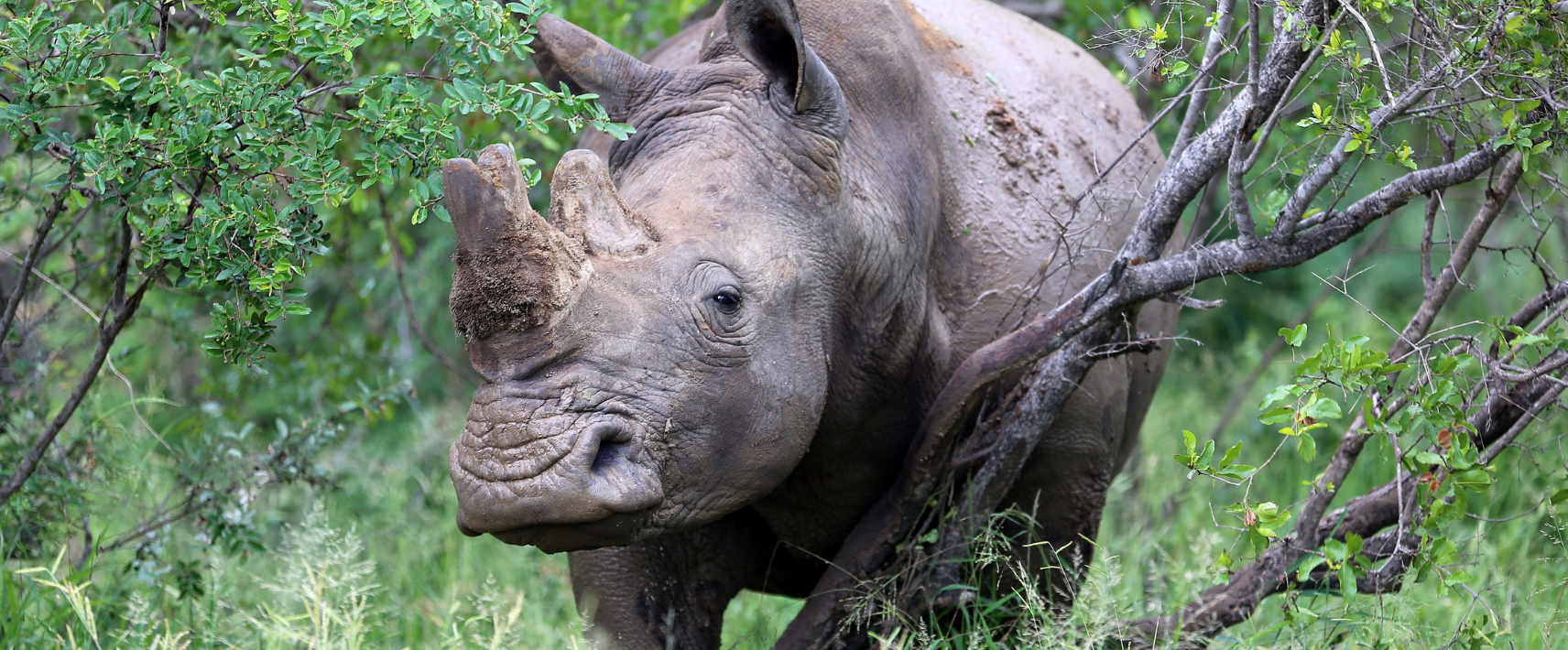One of the most important global meetings on wildlife trade has just wrapped up in Uzbekistan. It’s capital city Samarkand was where governments convened for the 20th Conference of the Parties (CoP20) to the Convention on International Trade in Endangered Species of Wild Fauna and Flora (CITES) to decide how international trade should be managed for some of the world’s most threatened...
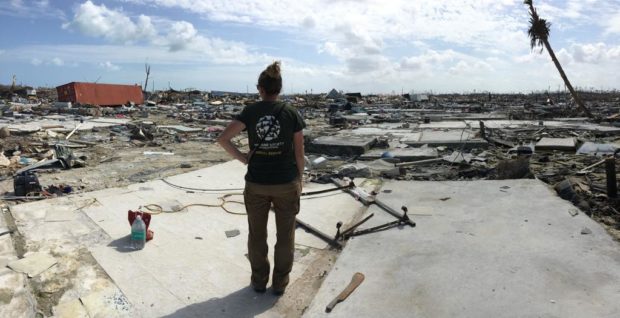
Last week, the United Nations’ Intergovernmental Panel on Climate Change released its latest report, one of the most comprehensive assessments of climate change to date. The report draws clear links between human-caused climate change and extreme regional weather events, concluding that some impacts will be unavoidable.
Kelly Donithan, director of Global Animal Disaster Response for Humane Society International, witnesses first-hand how disasters change the lives of animals and the people who care about them. As she relates below, climate change is shaping her team’s disaster response strategy.
In spring 2019, I was flying in a helicopter over miles and miles of flood- and wind-damaged land outside Beira, Mozambique. My stomach clenched at the sight of the vast scar left by Cyclone Idai. Trying to reach a community still cut off by floods and washed-out roads weeks after the storm, I wondered how our team of three could have any real impact.
Later that same year, I stood on a cracked foundation of a small house, looking out over a sea of wreckage where a neighborhood once existed. Hurricane Dorian had brought extraordinary winds and relentless rain to the Bahamas, erasing entire communities from the island of Abaco. While we searched for animal survivors through mountains of debris and the muddy remnants of peoples’ lives, it seemed unfathomable that anyone could have survived.
Meanwhile, across the world, fires were raging in Australia. While fire is a natural process in many landscapes to maintain healthy ecosystems, scientists have been warning for more than 10 years that human-caused climate change would increase fire risk there. Despite those predictions, I still felt disbelief during an urgent late-night call with colleagues at Humane Society International/Australia in January 2020 when they asked, “How soon can you get here?” I was on my way in less than 48 hours.
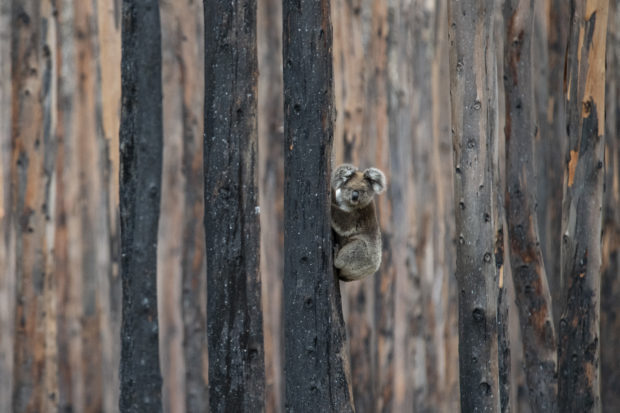
A koala in a eucalyptus forest on Kangaroo Island that was decimated by the wildfires in January 2020. Meredith Lee/HSI
There’s little training that could have prepared us for what we witnessed in Australia. When we arrived, fires were still ripping through the eucalyptus and scrub forests, and soon our days were filled walking silently through clouds of ash in a world of black and white—life’s colors extinguished by the flames.
As I write this, Haiti is simultaneously reeling from a massive 7.2 magnitude earthquake while bracing for a tropical depression which is expected to bring heavy rains and flooding to the shattered areas, potentially triggering mudslides and hindering rescue efforts.
Climate change binds all these natural disasters together. Whether through wildfires or drought or intensifying storm systems, our changing climate is having tremendous impacts on humans and animals around the globe. We understand that climate change will shape and reshape our mitigation, preparedness and long-term recovery strategies.
For that reason, we’re focused on reducing (or eliminating, where possible) the long-term impact of disasters. We work with vulnerable communities and experts to identify, develop and launch mitigation strategies well in advance of hazardous events, while continuously evaluating and improving our approach for greatest impact. This is a priority for us, and one that is necessary if we are to keep up with the increasing number and intensity of disasters.
Our work has always included preparedness—those actions taken prior to an emergency to promote readiness. We collaborate with governments and partners in a number of countries to incorporate animals into their disaster preparedness planning; we provide training on developing protocols; and educate the public on how to keep animals safe.
Once the immediate life-saving efforts cease in a crisis, the work is far from over. Recovery involves restoration and returning to life as “normal.” In most scenarios, however, the situation requires substantial reshaping and reassessing of infrastructure and essential functions to ensure greater resiliency in communities, institutions and buildings that were destroyed. In each instance we anticipate the next catastrophe, and we must rebuild and restore communities with the expectation that a similar event will happen again.
Finding hope among the ruins
In Mozambique, our helicopter landed in a rural soccer field. Hundreds of people gathered around. An elder from a neighboring township told us that 92 cows at his home had perished in the storm and disease threatened the few remaining animals. Animal agriculture is one of the drivers of climate change, and big agriculture interests are fixing their sights on less developed nations for growth – nations which are already disproportionately affected by disasters. (In fact, because of animal agriculture’s significant role in climate change, many people throughout the world are shifting their diets away from the meat-centric meals to more plant-based foods.)
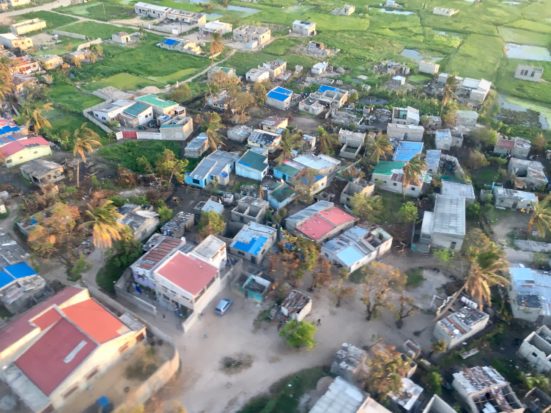
When Cyclone Idai struck Mozambique, HSI flew into the region by helicopter to aid communities and their animals. HSI
We headed off on a 10-mile round trip walk in the extreme heat to reach the elder’s home. Along the way, he pointed to a spot where he had found the bodies of his sons, their lives claimed by the unexpected waves that consumed their inland homes. Later he paused, looking into the distance at a single tall tree, its branches still bent in the direction of the storm’s winds. That was where he clung for three days with other family and friends; that is where his daughter-in-law fell into the flood waters due to exhaustion and was swept away.
When we reached his home, we rounded up the cows and provided vaccinations and supplements to give these gentle animals the care they desperately needed before we moved on to our next rescue effort.
I remember another moment, in the Bahamas, from where I stood on that same fractured foundation in Abaco: Near a displaced shipping container, a flash of black and white fur caught my eye. A young cat hopped through the rubble with a tiny meow. We approached cautiously, but she trotted right over, happily eating the meal we offered and lapping up some water. We carried her away with us, her persistent purring encouraging us as we moved forward with our rescue mission.
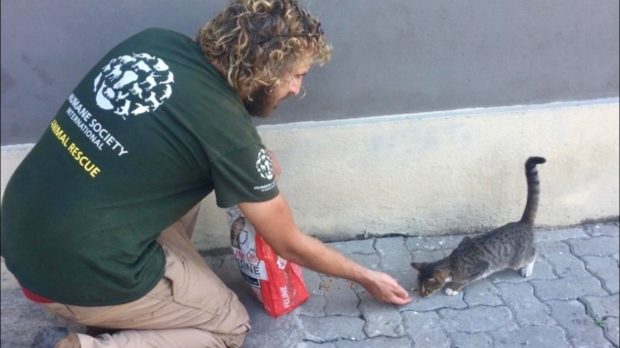
An HSI team member feeding a cat displaced by a storm. HSI
These individual animals are symbolic of the hundreds who are rescued every year through HSI’s rescue program. But our work doesn’t stop when all the needs of these animals are met. By providing long-term support and assistance, we help animal caretakers and animal populations recover from the unimaginable disasters and have stronger resiliency for the future.
The post ‘I rescue animals from disaster areas. Climate change is a gamechanger.’ appeared first on A Humane World.
Subscribe to stay informed with our regular blogs and campaign updates.

